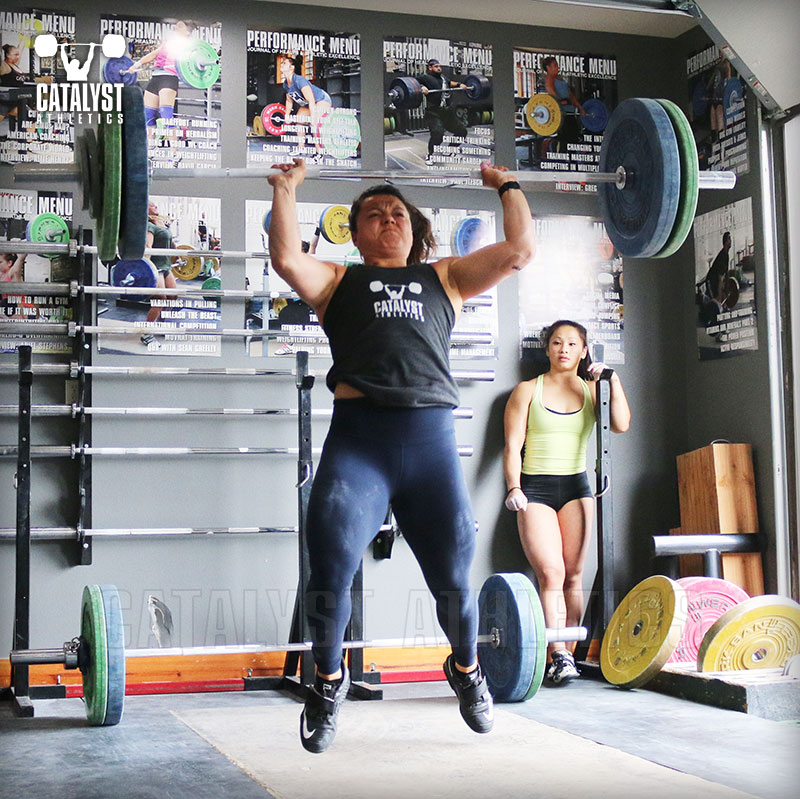Ask Greg: Issue 188

Jon Asks: I love weightlifting and wish I could dedicate more time to it, but I have to balance work, life and training. Do you have any tips on taking a training program and reducing the amount of time it takes to complete a session?
Greg Says: Start by simply eliminating anything you can reasonably consider superfluous, or at the very least, unnecessary. Get strict with your assessment based on clear priorities. A good place to start on this is with accessory work—what can you live without? With the primary barbell lifts, consider what your strengths and weaknesses are, and minimize time spent on your strengths as much as possible without regressing.
Next is simply ensuring that when you’re training, that’s all you’re doing—you’re not sneaking in emails, Instagram, watering the garden, etc. between sets. We all think we can get that stuff in quickly and not extend the rest period, but it never works the way we envision. And even when we get the actual task completed in time, it reduces our focus and momentum so the rest of what we’re doing ends up taking longer. Ideally don’t even have your phone in sight, let alone reach. You’re giving all of your other responsibilities and obligations priority by reducing your training time, so do the same in reverse when it’s time to train.
Something I’ve always found helpful personally is to have a timer running during my session. I may or may not even have a goal duration to meet—the simple awareness of a running clock keeps me on track and moving faster on its own. It’s an easy way to remind you not to mess around.
You can also time your rest periods and keep them as tight as possible—even with tough sets, you can almost always get away with 2 minutes, especially once you’ve done it for a while and have become conditioned for it. Along the same lines, it’s a good rule to not sit down between sets—if you stay standing, you’re naturally going to move through sets at a faster pace and feel ready to go sooner, with or without a timer.
Finally, assemble anything you can into supersets or circuits. Accessory work can pretty much always be completed in a circuit without any rest between sets. That alone can shave a significant chunk off your training time. You generally won’t be as able to reasonably superset your primary lifts, but if you have the gear to do so, you can combine things that are unrelated and don’t interfere with each other—for example, squats and presses. You can also do sets of accessory work between sets of your primary lifts if there’s no interference. For example, pull-ups between sets of squats or pulls.
Generally you can reduce enough time with those things that you won’t have to change the training program itself too significantly.
Greg Says: Start by simply eliminating anything you can reasonably consider superfluous, or at the very least, unnecessary. Get strict with your assessment based on clear priorities. A good place to start on this is with accessory work—what can you live without? With the primary barbell lifts, consider what your strengths and weaknesses are, and minimize time spent on your strengths as much as possible without regressing.
Next is simply ensuring that when you’re training, that’s all you’re doing—you’re not sneaking in emails, Instagram, watering the garden, etc. between sets. We all think we can get that stuff in quickly and not extend the rest period, but it never works the way we envision. And even when we get the actual task completed in time, it reduces our focus and momentum so the rest of what we’re doing ends up taking longer. Ideally don’t even have your phone in sight, let alone reach. You’re giving all of your other responsibilities and obligations priority by reducing your training time, so do the same in reverse when it’s time to train.
Something I’ve always found helpful personally is to have a timer running during my session. I may or may not even have a goal duration to meet—the simple awareness of a running clock keeps me on track and moving faster on its own. It’s an easy way to remind you not to mess around.
You can also time your rest periods and keep them as tight as possible—even with tough sets, you can almost always get away with 2 minutes, especially once you’ve done it for a while and have become conditioned for it. Along the same lines, it’s a good rule to not sit down between sets—if you stay standing, you’re naturally going to move through sets at a faster pace and feel ready to go sooner, with or without a timer.
Finally, assemble anything you can into supersets or circuits. Accessory work can pretty much always be completed in a circuit without any rest between sets. That alone can shave a significant chunk off your training time. You generally won’t be as able to reasonably superset your primary lifts, but if you have the gear to do so, you can combine things that are unrelated and don’t interfere with each other—for example, squats and presses. You can also do sets of accessory work between sets of your primary lifts if there’s no interference. For example, pull-ups between sets of squats or pulls.
Generally you can reduce enough time with those things that you won’t have to change the training program itself too significantly.
| Greg Everett is the owner of Catalyst Athletics, publisher of The Performance Menu Journal and author of Olympic Weightlifting: A Complete Guide for Athletes & Coaches, Olympic Weightlifting for Sports, and The Portable Greg Everett, and is the writer, director, producer, editor, etc of the independent documentary American Weightlifting. Follow him on Facebook here. |
Search Articles
Article Categories
Sort by Author
Sort by Issue & Date
Article Categories
Sort by Author
Sort by Issue & Date

